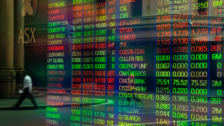Negative real yields positive for gold
Sentiment is shifting in the discussion about the outlook for gold. The view that the gold price will continue to weaken, as it has done for much of this year, has given way to more positive forecasts. The reason is rising inflation, and the fact that inflation-adjusted bond yields are in negative territory – a strong positive for gold.
After US CPI for October came in at a thirty-year high of 6.2%, the nominal 10-year Treasury yield rose 0.11%. But market pricing of 10-year inflation jumped by 0.16%. Real yields, then, have been hitting lower lows this year than last year, with the opening of the pandemic.
With safe-haven assets like US Treasuries offering no returns after adjusting for inflation, gold – which has historically done well when inflation is high – has become an attractive alternative.
Inflation not fading away
Inflation looks like it’s lurking rather than leaving. US CPI for the past five months has been above 5%. Inflation is reaching higher highs, despite Fed-speak that it’s “transitory.” It is picking-up in stickier components in price gauges like rent (33% of CPI and 42% of core inflation), challenging the transitory story.

Because CPI only measures rent changes gradually, it’s possible that even higher numbers come through in imminent months. JPMorgan sees room for rent CPI running at 5% in a year’s time.
Increasingly, the US Fed will be walking a tightrope, with inflation high, but the US labour market has not recovered, with low worker participation rates. The Fed will have to negotiate which of its two-part mandate to address: controlling inflation in line with its target or fostering the labour market to hit a lower target unemployment rate.
Gold acts as a real-yield hedge, going up in price when real yields go down. As such, it is likely to remain a diversification component for investors. And on this front, it’s not just that inflation is rising, but that risk-free interest rates across different term-to-maturities are ground-floor low. As a result, investors have been taking up alternative assets like gold in place of cash and fixed-income assets to support portfolio returns.
Gold can hedge against the share market
But gold is being used for more than betting on inflation. It is also being used to hedge against share market crashes.
For 30 years, the gold price, expressed in Aussie dollars, has had a negative correlation of -0.36 to international equities like the S&P 500 and a negative correlation of -0.23 to domestic Australian equities like the S&P/ASX All Ords. When the share market suffers, gold stands up.

Unlike some other defensive assets like unlisted infrastructure, gold also has the advantage of being extremely liquid. On average, the global gold market trade amounted to A$238 billion a day in 2020.
In portfolio terms, gold’s negative correlation to shares helps improve an investor’s Sharpe ratio, or risk-adjusted returns. And with investors having turned away in degrees from cash and fixed-income, rather than adding more to equities, which doesn’t necessarily improve risk-adjusted returns, they’ve been adding gold.

Gold is a weather-proofing asset, whether it’s a guard against inflation from experimental monetary policy (note that gold’s US dollar price hasn’t gone beneath its pre-QE level of 2008), an end-of-economic-cycle guard or an international and domestic equity hedge, it serves as an all-purpose defensive asset.
It’s a low-cost, liquid alternative (i.e. has different performance properties than equities, as it doesn’t have company cash-flow risk) which enables investors to have a pre-position in a risk-off asset without timing event risks such as a once-in-a-century pandemic.
Footnotes:
*Data as of September 2021. The average Australian super fund portfolio is based on the average Australian super fund asset allocation in Q2 2021 according to APRA and benchmarks are selected based on Your Future Your Super from the Australian Treasury. This includes a 54.9% allocation to equities, 18.2% allocation to fixed income, 10.6% allocation to cash (Bloomberg AusBond Bank Bill Index), 7.7% to Australian property (ASX 300 AREIT Index), 5.6% to unlisted Australian Infrastructure (MSCI Australian Infrastructure NTR Index) and 3% to “others” (50/50 between international equities and fixed income – again based on Your Future Your Super). All indices are monthly in AUD. The allocation to gold is based on the LBMA Gold Price AM in AUD.
**Based on weekly returns between September 2001 and September 2021 of the ASX 300 Index, the MSCI World ex-Australia NTR Index, the ASX 300 AREIT Index, the MSCI Australia Infrastructure NTR Index, the Bloomberg Commodity Index, and the LBMA Gold Price AM. All measured in AUD.
***Based on monthly data between September 2001 and September 2021.
Disclaimer:
The information provided in this document is general in nature only and does not take into account your personal objectives, financial situations or needs. Before acting on any information in this document, you should consider the appropriateness of the information having regard to your objectives, financial situation or needs and consider seeking independent financial, legal, tax and other relevant advice having regard to your particular circumstances. Any investment decision should only be made after obtaining and considering the relevant product disclosure statement.
An investment in cryptocurrency should be considered very high risk and suitable only for investors who understand the risks involved and have a high risk tolerance and an ability to bear losses.









